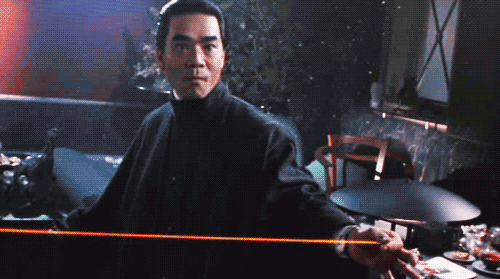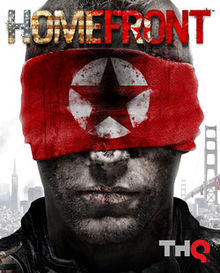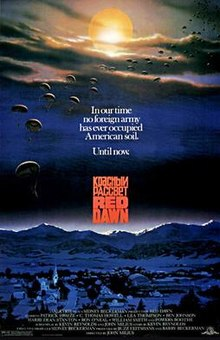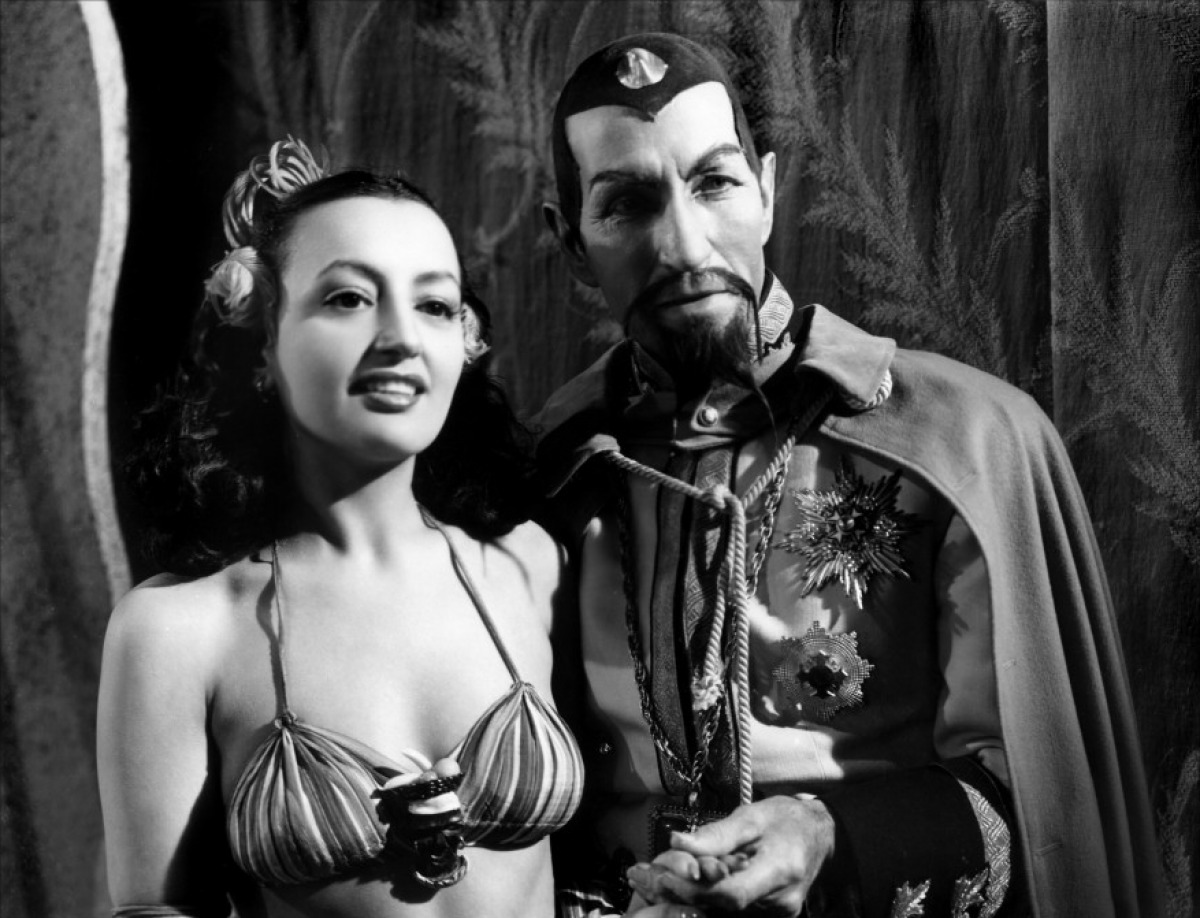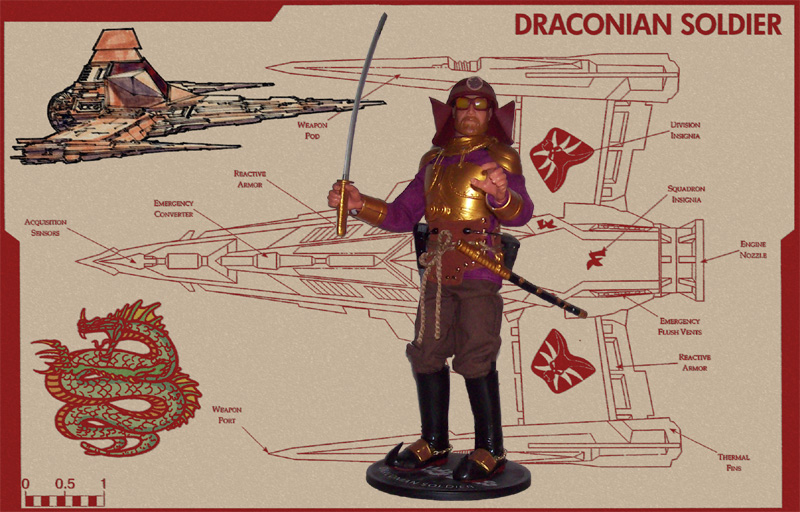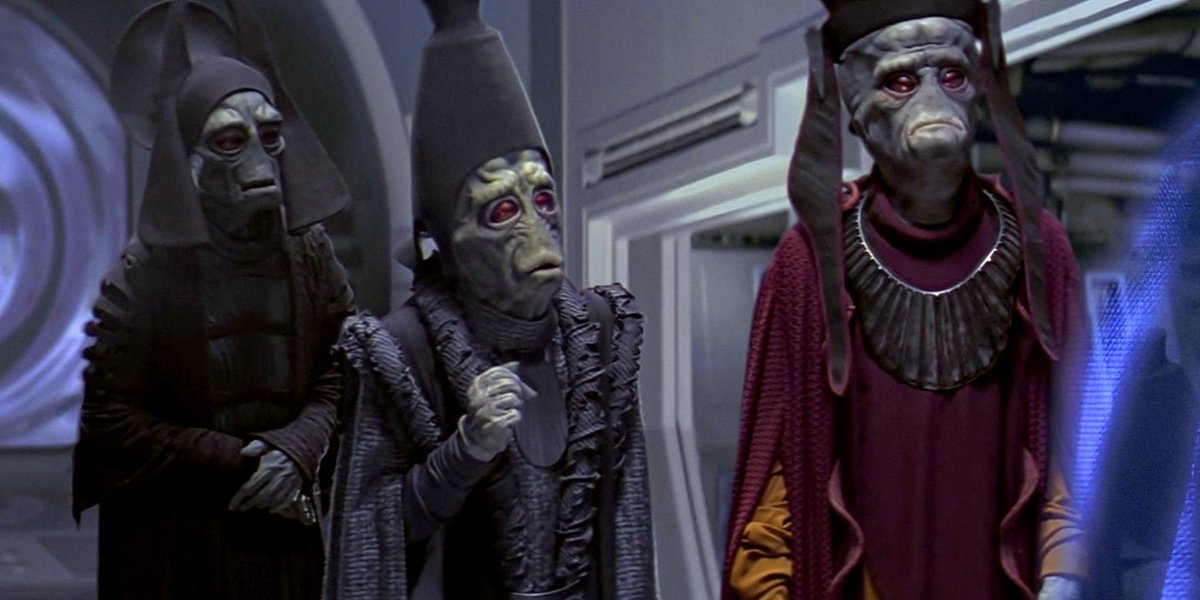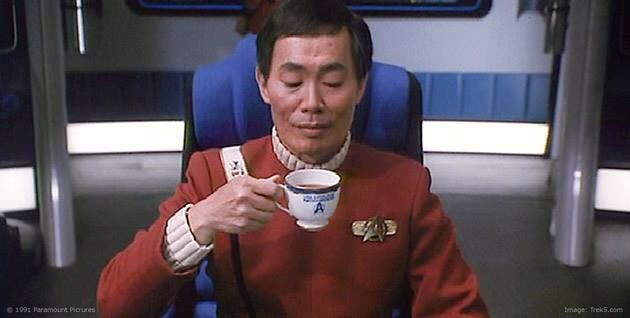I& #39;ve written before a little about the anti-Asian sentiment that pervades a lot of cyberpunk media, but lately I& #39;ve been digging into old sci-fi/sci-fantasy serials for No Particular Reason and it& #39;s pretty prominent and nasty there, too, going way back to the 1930s.
1/
1/
In the original Buck Rogers comic strip, some of the first enemies that Buck encounters are "half-breeds" and "Mongols." Wilma explains that they swept out of the East on levitating airships and with disintegrator rays, destroyed all resistance.
2/
2/
The conquerors are described as then rebuilding cities with lavish science and incredible prosperity, but in this fantasy, the surviving people of the U.S. reject this and flee to the wild to remain free.
3/
3/
And of course the way that you show that these scoundrels are true villains is by having them try to kidnap the virtuous white woman for their evil emperor. A standard trope to rile up your (white, male) readers.
4/
4/
That same story cropped up seventy-five years later in the video game "Homefront" (2011): invaders from across the Pacific (in this case, North Korea) suddenly appear with incredible military force and take over everything.
5/
5/
(Unsurprisingly, "Homefront" was worked on by John Milius, the same guy who gave us the flag-waving movie "Red Dawn" (1984), about a Soviet attack and takeover of part of the U.S. Very nationalist stuff that wants you to be scared of/angry at foreigners.)
6/
6/
Back in serial-land, the original Flash Gordon faces down the nemesis Ming the Merciless, who is, of course, coded as Asian. And naturally one of the reasons that Flash is his enemy is because Ming pursues the intimate attentions of Dale Arden.
7/
7/
Moving forward again, even the television revamp of Buck Rogers (1981) uses Asian coding for its villains, the Draconian Empire. The costuming draws upon Japanese samurai influence and the iconography upon Asiatic dragons.
8/
8/
So this kind of anti-Asian sentiment isn& #39;t a unique feature of cyberpunk fiction; it& #39;s common throughout a bunch of our foundational science fiction media, too. When your friends tell you "Anti-Asian sentiment in games and sci-fi has a long history..."
9/
9/
They& #39;re not just talking about cyberpunk.
Today, in the U.S. in 2021, we& #39;re dealing with an outbreak of anti-Asian sentiment culturally, with Asian people scapegoated for COVID-19 and suffering cruel mistreatment, attacks, prejudice, and loss of livelihood.
10/
Today, in the U.S. in 2021, we& #39;re dealing with an outbreak of anti-Asian sentiment culturally, with Asian people scapegoated for COVID-19 and suffering cruel mistreatment, attacks, prejudice, and loss of livelihood.
10/
My point is, this is not new. Racial coding in our fiction goes back decades or more. Over and over, space serial villains and evil empires are presented with Asiatic motifs. Showing up in Buck Rogers and Flash Gordon just meant it would be re-created in Star Wars, too.
11/
11/
So when designers or fans say, "Hmm, maybe we should do better and not lean into these stereotypes of Asians as bumbling villains, cruel tyrants, or faceless warriors serving dutifully like robots,"—these tropes contribute to the cultural conversation about Asiatic people.
12/
12/
Generations of people in the U.S. (and beyond) have absorbed and normalized this media, and it underpins reactions to Asian people once you dig beneath the "model minority" veneer (itself another racially-coded trope that is harmful).
13/
13/
That means a combination of including Asian designers and writers, portraying Asiatic characters in multiple ways and not just as stereotypes, and listening to Asian fans and creators when they tell us how better to include them in media.
14/
14/

 Read on Twitter
Read on Twitter